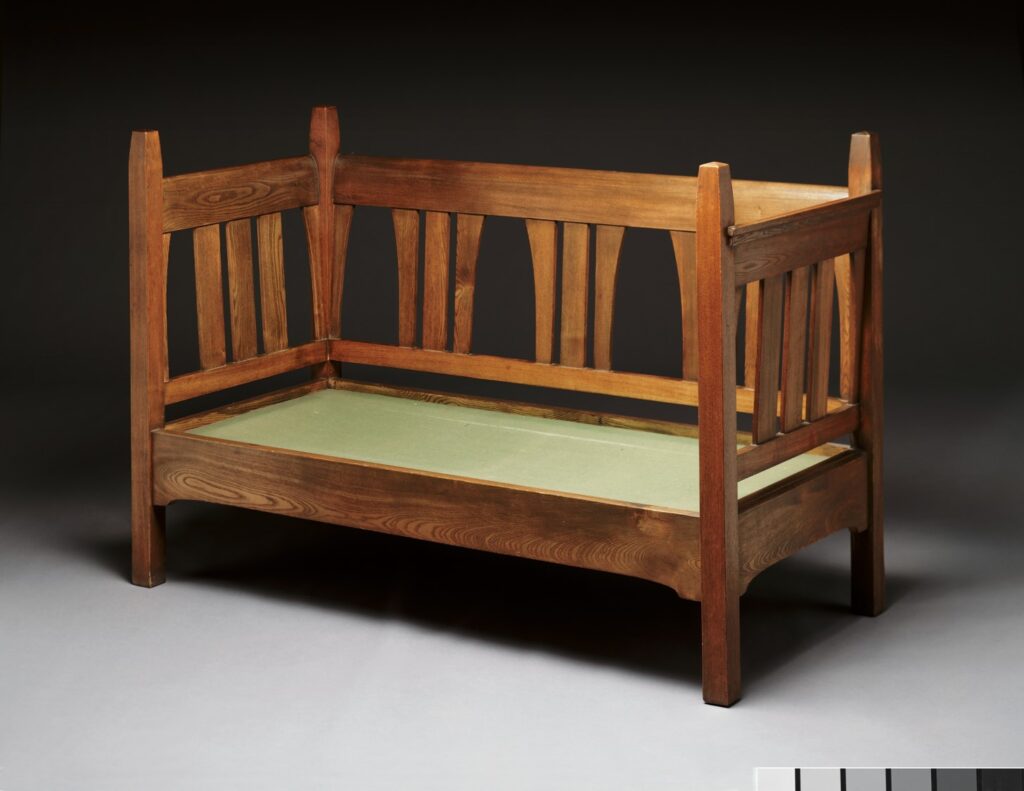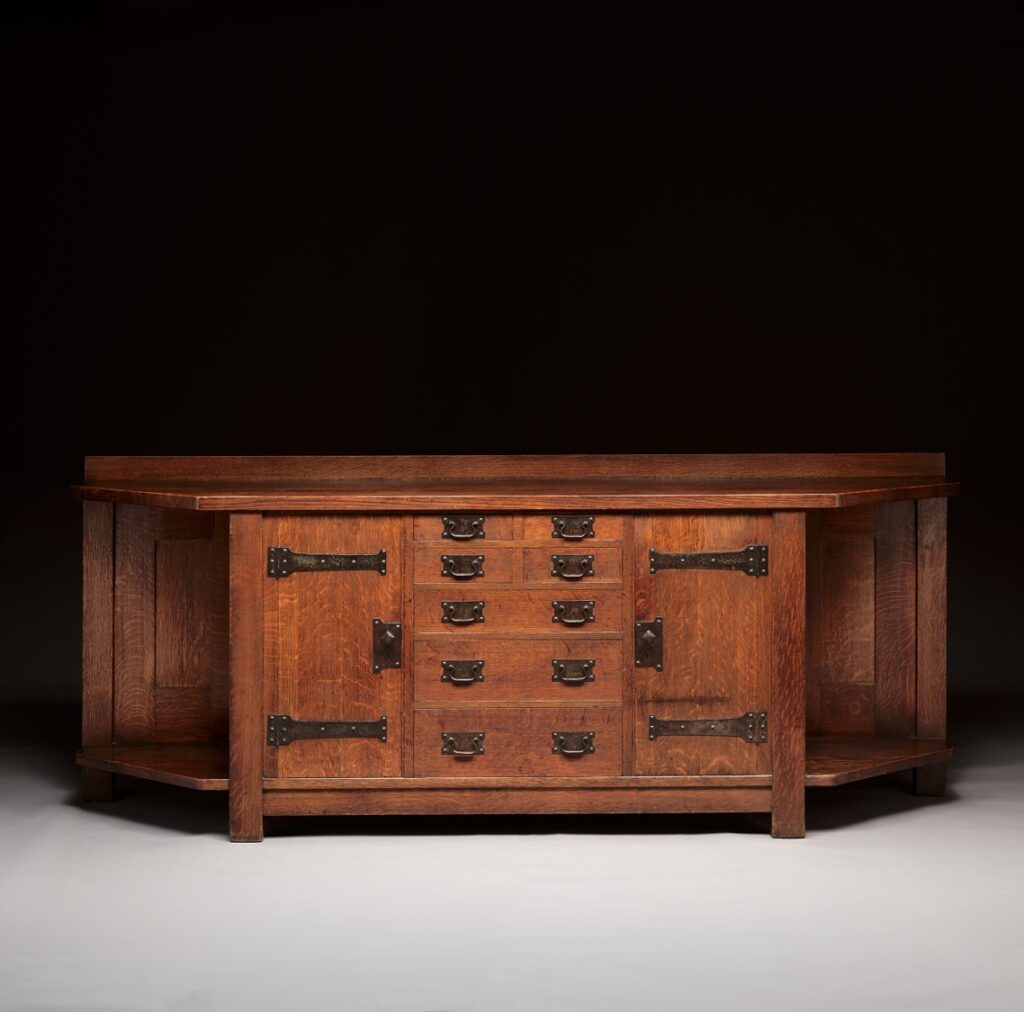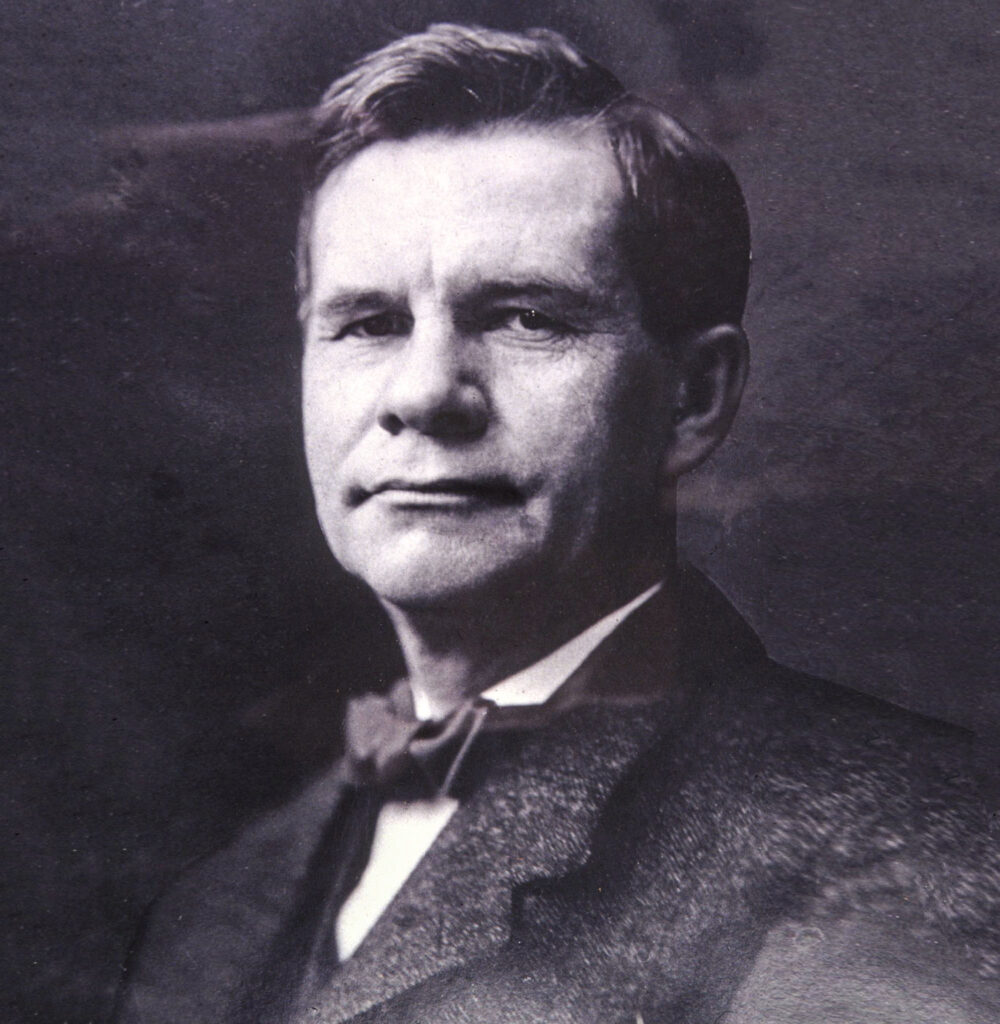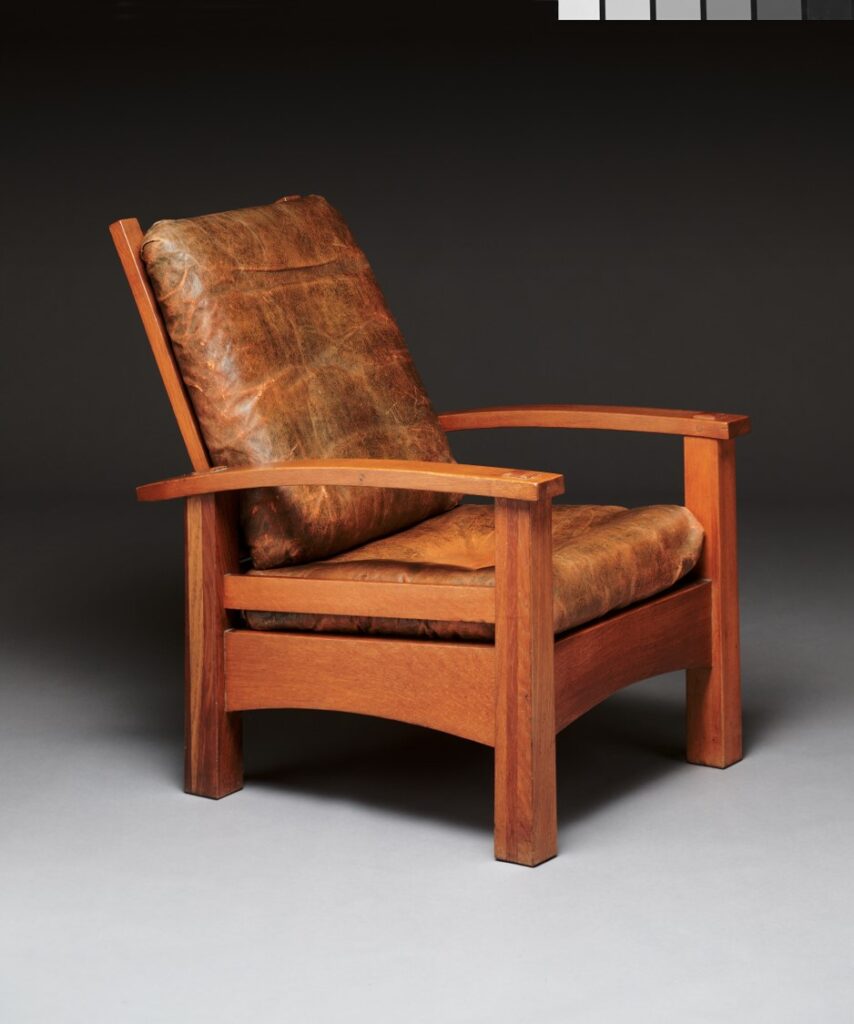
This is a review of the new documentary Gustav Stickley: American Craftsman.
‘Simplicity of life,’ William Morris famously said, ‘even the barest, is not a misery, but the very foundation of refinement: a sanded floor and whitewashed walls, and the green trees, and flowery meads, and living waters outside.’ Morris was a dreamer, but he was also a Victorian, and despite his enormous efforts and his lifelong commitment, he was not able to convince the public to abandon the lavish, ornamented, affordable goods they could easily find in any shop across the UK, in favor of the simple, bare, handcrafted, expensive goods that he fervently promoted. The ideas that the Victorian home was ‘ugly’ and non-functional, that the machine-made goods were of a low quality and a way to make the rich richer, were too radical for the public to accept at the time.
Devoting his life to unsuccessfully converting the Victorians, Morris died on the eve of the 20th century, frustrated and miserable. But his reform ideas and his dream for a better world did not die with him; rather, they came to shape the global lifestyle and the revolutionary design culture of turn-of-the-century Europe and America. Every movement of the time – Art Nouveau, Jugendstil, Secession – and every modern architect during the succeeding decades – Josef Hoffmann, Charles Rennie Mackintosh, Charles R. Ashbee, Louis Comfort Tiffany – were, to some extent, influenced by Morris.
Yet none was as capable of truly transforming this utopia into a commercial enterprise as American furniture manufacturer Gustav Stickley (1858-1942), who brought Morris’ radical message to the US. Stickley was no less ambitious than his teacher and no less passionate about changing the world and transforming the taste of the public. In fact, in the footsteps of his hero, he founded a business and commercialized the Arts and Crafts Movement, allowing the public to live with well-crafted furnishings, and promoting ‘art interiors’ of simplicity. Stickley promoted a lifestyle package and was the leading American ‘influencer’ of the turn of the century—the man who was admired near and far by those who wished to live a life of elegance.
A new documentary ‘Gustav Stickley: American Craftsman,’ directed by Herb Stratford and written by Stickley’s biographer, David Cathers, opened this week in Virtual Cinema. It tells of Stickley’s amazing rise and fall, featuring the style which made him a successful designer. The film also tells the story of an entire generation of visionaries who sought to create a better world: cleaner, more honest, and more organic; one that would reconnect Man with nature, and revive social values and the crafts. Told by a series of experts and family members, they provide various perspectives to the life and career of the man who built an empire, and was on the top of the world, but who eventually died in poverty.
I loved learning about Stickley’s upbringing, and his entry into the world of furniture manufacturing, first in partnership with his brothers, and then on his own; and about his conversion to the principles of the Arts and Crafts Movement which came to inform his life and business decisions. I particularly loved seeing his home in Syracuse, the laboratory for his arts and crafts interior, and the pump house at Skaneateles Lake in upstate New York, which he restored as a summer family camp. He was a true visionary who hired famous architects and designers to bring fresh looks to the furniture, and indeed, came to the forefront of the world of furniture design during his time. Stickley created his dream in the form of a farm in New Jersey, where he built a club which was turned into his home, open to the public today as the Stickley Museum in Craftsman Farm, and is one of my favorite historic houses.
My favorite part in the documentary is devoted to Stickley’s legacy. The simple, sturdy, rectilinear furniture was rediscovered in the 1972 exhibition at the Art Museum in Princeton University, and collectors began purchasing his work in the 1980s. This was a time when Stickley’s name was becoming increasingly well-known, thanks partly to Wendy Kaplan’s groundbreaking exhibition at the Museum of Fine Arts, Boston ‘The Art that is Life: the Arts &Crafts Movement in America, 1875-1920.’ Starting in the late ‘80s, the furniture was largely seen in the homes of the stars—Steven Spielberg and Barbara Streisand for example—and in the elegant homes of art connoisseurs. The market flourished under the leadership of Nancy A. McClelland at Christie’s, and Stickley was turned into a blue-chip name. His furniture regularly fetches six figures in today’s market.
This journey from the simplistic to the glamorous is told by David Rago and Suzanne Perrault who illuminate the evolution of the market, as their auction house, Rago, is considered the leading force in that market. Collectors Bill and Patsy Porter talk about their early collecting. Porter is a famed automotive designer, and when speaks about the furniture at his Detroit home, he exudes passion, and the deep knowledge of a connoisseur. I only wish that the film would have further explored this aspect, with portraits of those amazing collectors who live in some of the most beautiful homes in America, and to touch on those of great taste, such as Steve Jobs, who chose to live with Stickley’s furniture because of its aesthetic appeal and sophisticated work, as well as its unquestionable value.
To watch, use this link.






